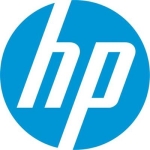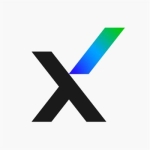What is our primary use case?
It was our primary endpoint protection.
How has it helped my organization?
The ability to respond rapidly, whether it was doing isolation or threat hunting, helped improve our security. Even when there were a few false positives, it was a good exercise for us to run through and determine what exactly was going on. It was definitely an improvement from what we were using before, which was Trend Micro. That tighter integration definitely helped.
In the time that I was there, we didn't really have any sufficiently major occurrence that did not turn out to be a false positive. But there was useful stuff coming up on the dashboard, where it showed the vulnerable applications. Being aware that those were in our environment, and what threat level they presented on that one to 10 scale, was helpful. It enabled us to say, "Hey, look, Firefox version 71 is still in our environment, and it's a 10. We need to contact that user and get them to upgrade, or remove it if they're using something else." That definitely allowed us to enhance our security posture.
That prioritization of threats, particularly on those vulnerable applications, meant we were able to take action using Microsoft Endpoint Manager. We could deploy applications with supersedence to get that old product off of the machines or upgraded. It definitely improved our situation.
Being able to do pretty immediate research through a simple right-click and threat-detect was very quick and invaluable in making a rapid assessment of what I might be looking at. And with the tighter integration with the Umbrella and Firepower products, when I got in touch with our infrastructure team, they were able to see what I was seeing and more. That was very eye-opening: Wow, look how much information we can get and how quickly we can get that information. We could start evaluating what our status was and what actions we needed to take.
Overall, the impact on our security was that the endpoints were that much safer than they were before, by eliminating those vulnerable applications. And in the event that there was something that appeared to be significant, we had the ability to isolate that device.
Also, Cisco Secure Endpoint, as far as I know, consolidated endpoint, cloud, and remote access agents into a single agent. When we bought the product, it was actually Cisco AMP, and then they went to Cisco Secure Endpoint and everything was managed through the cloud. With that change in the agent, I presume that was all moved to a more cloud-oriented situation.
I would say it improved our time to detection, but that's one of those things that is hard to document. I didn't spend a whole lot of time working with the Trend Micro product, but it seemed to me like it was probably an improvement of at least 30 minutes, which in today's world is forever.
What is most valuable?
I liked the ability to have a choice between the full scan and the flash scan.
There were also a couple of occasions where being able to isolate the machine on the network remotely was very helpful because, at that company, 80 percent of the workforce was remote.
Also, the integration with other Cisco products seemed to be really effective. We had Umbrella in place and we were using AnyConnect as well as Firepower. Once a threat was detected, being able to do the threat lookups and the live tracking was really useful.
And in terms of simplifying cybersecurity, being able to have scheduled runs meant we were able to break our endpoints out into different groups. We chose to do different regions and different departments. It was very easy to
- set up the groups up
- copy the policies from one to the other.
Once you understood how to do it, it was really simple to create groups and group them together or apply them to each other. It took a little bit of a learning curve to get up to speed, but once we were up to speed, it was very user-friendly.
I also felt that remediating issues using Secure Endpoint was pretty easy. Most of the time, it was a matter of isolating the endpoint that we thought had an issue, running a full scan, confirming that there was no serious issue, and then getting the machine back online. In our case, we were pretty fortunate in that regard, but the remediation appeared to be very simple.
What needs improvement?
We were using a third-party help desk. One of the ways that they were fixing problems was to delete the client and then add the client back if there was an issue where the client had stopped communicating. Any improvement in the client communicating back to the server would be good, particularly for machines that are offline for a couple of weeks. A lot of our guys were working on a rotation where the machine might be offline for that long. They were also terrible about rebooting their machines, so those network connections didn't necessarily get refreshed. So, anything that could improve that communication would be good.
Also, an easier way to do deduplication of machines, or be alerted to the fact that there's more than one instance of a machine, would be useful. If you could say, "Okay, we've got these two machines. This one says it's not reporting and this one says it's been reporting. Obviously, somebody did a reinstall," it would help. That way you could get a more accurate device count, so you're not having an inflated number. Not that Cisco was going to come down on you and say, "Oh, you're using too many licenses," right away. But to have a much more accurate license usage count by being able to better dedupe the records would be good.
I also sent over a couple of other ideas to our technical rep. A lot of that had to do with the reporting options. It would be really nice to be able to do a lot more in the reporting. You can't really drill down into the reports that are there. The reporting and the need for the documentation to be updated and current would be my two biggest areas of complaint.
Also, there was one section when I was playing with the automation where it was asking for the endpoint type rather than the machine name. If I could have just put in the machine name, that would have been great. So there are some opportunities, when it comes to searching, to have more options. If I wanted to search, for example, by a Mac address because, for some reason, I thought there was a duplication and I didn't have the machine name, how could I pull it up with the Mac address?
When you're getting to that level, you're really starting to get into the ticky tacky. I would definitely put the reporting and documentation way ahead of that.
For how long have I used the solution?
At the company where I used Cisco Secure Endpoint, I used it for about a year and a half. But I'm no longer there.
What do I think about the stability of the solution?
It definitely seemed very stable.
What do I think about the scalability of the solution?
It looked like it was very scalable. We only had one Mac in the environment, so I can't really comment too much on the Mac side. But on the Windows side, it seemed good.
There were roughly 800 endpoints and almost all the machines were Dells, whether they were Precisions or Latitudes. There were also Toughbooks because that company was in the oil industry. It was all Windows 10. It was a relatively homogenous environment. There was some variation in which version of the OS people were on, but they were all Windows 10, and probably all 1909 or later.
How are customer service and support?
I only had to use the solution's technical support a couple of times and they were really responsive.
How would you rate customer service and support?
Which solution did I use previously and why did I switch?
We had previously used another product and then replaced that because we were very Cisco-centric. The idea was that switching to Secure Endpoint would give us better integration and thereby enhance our security posture.
How was the initial setup?
We just pushed it out from the public cloud through, at that point, the Cisco AMP site. We set up groups and said, "Install these by this date, by this time." It was pretty straightforward.
The bigger portion for us was getting management to make decisions about how they wanted the policies to be done. How often did they want to do a full scan? How often did they want to do a flash scan? What exactly did they want the policies to be? But once they made those decisions, the configuration was super simple.
In terms of maintenance, going back to that issue of the duplication of entries, it did require some maintenance as far as making sure that the count was accurate. As we were onboarding and offboarding, we did not have an in-house CRM since we were using a third-party help desk. That meant we were not able to create an automation for the onboarding and offboarding of users. Removing those machines as they went offline was a manual process for us.
What about the implementation team?
Which other solutions did I evaluate?
When I got there, we did look at one or two others, but they had pretty much made the decision to go with Cisco by the time I arrived.
What other advice do I have?
We had a very small IT team, so we didn't have a security team, per se, other than being able to rely upon Cisco for assistance if we saw something that we thought was major. We could have them, if need be, engage their team through the active threat detection. But luckily, everything that we ran into that looked like it might have been something major, turned out to be a false positive.
With the few false positives that we had, we were able to mobilize and react very quickly. We were able to involve Cisco pretty much right away, and start the threat-hunting routines and look at the virus total scores to determine if it was really a threat. How it entered the environment, et cetera.
I thought it was very easy to do an investigation to the point that I was involved as the endpoint manager and the administrator of the software. When it came to the real threat hunting, because I didn't have access to Umbrella and Firepower, once I detected something, it got handed off, to a large extent. I would do what I could on my end to isolate the endpoint and get the information over to the infrastructure team, and then they really ran with it.
I didn't notice it necessarily shutting down threats in advance so much as it threw alerts, but that may be because we did not have the automations and workflows configured to do that, by the time I left that company. That was something that we were looking into and playing with and developing.
Overall, I really liked the product. It was well done. If I had to say the few things that were lacking, I really would have liked the ability to drill deeper into the reporting. Also, the documentation available online didn't always seem to fit and could be kind of convoluted, and it was difficult to locate what you were looking for.
Disclosure: My company does not have a business relationship with this vendor other than being a customer.



















